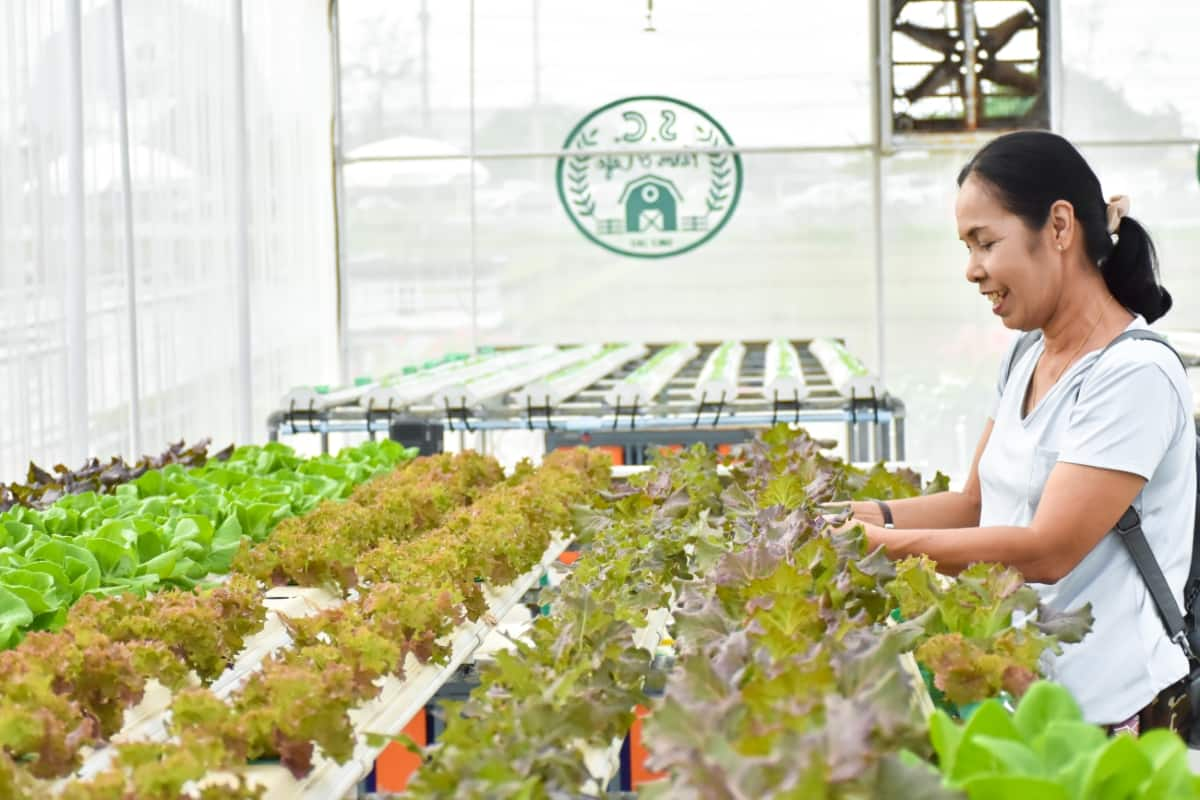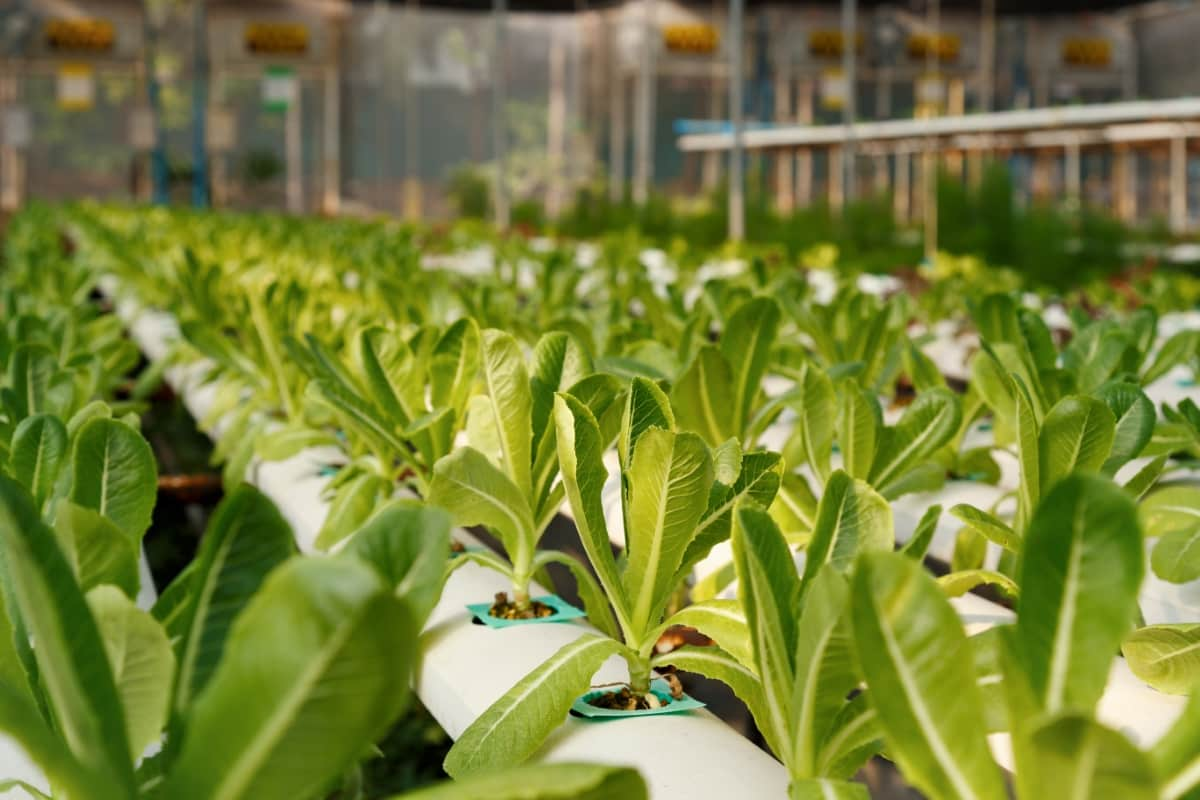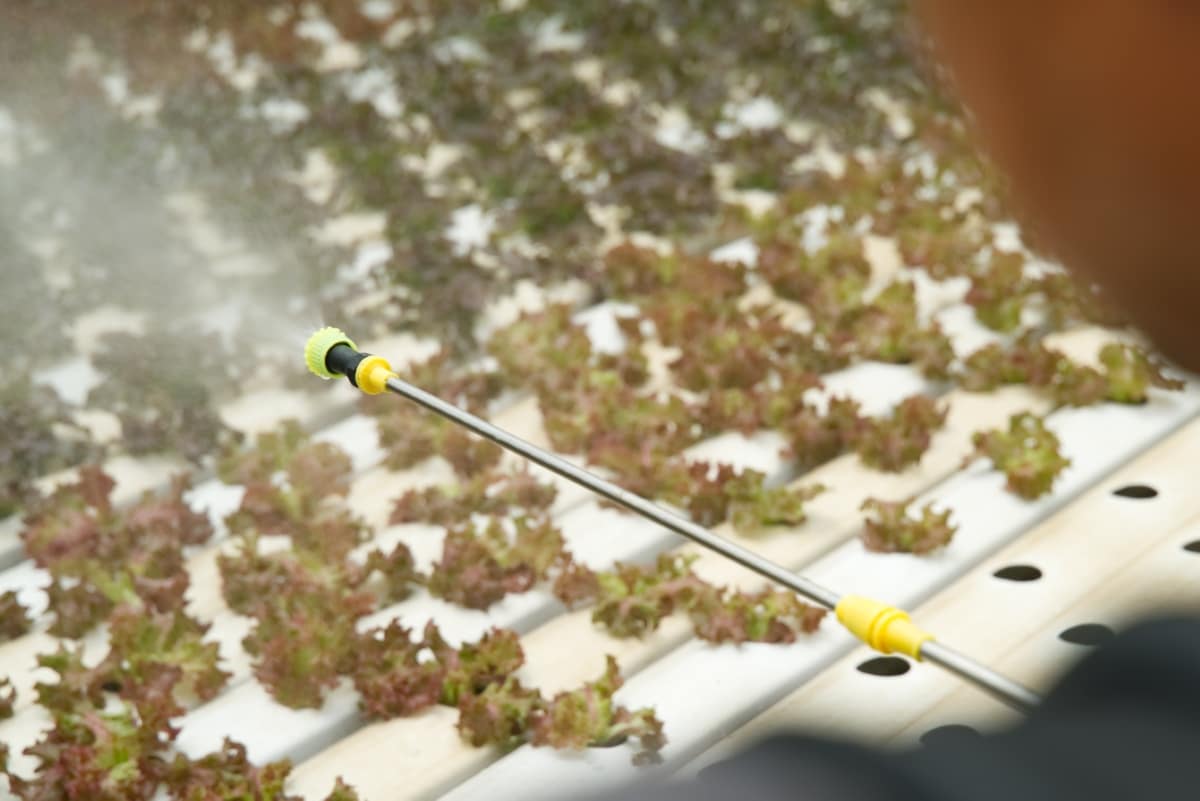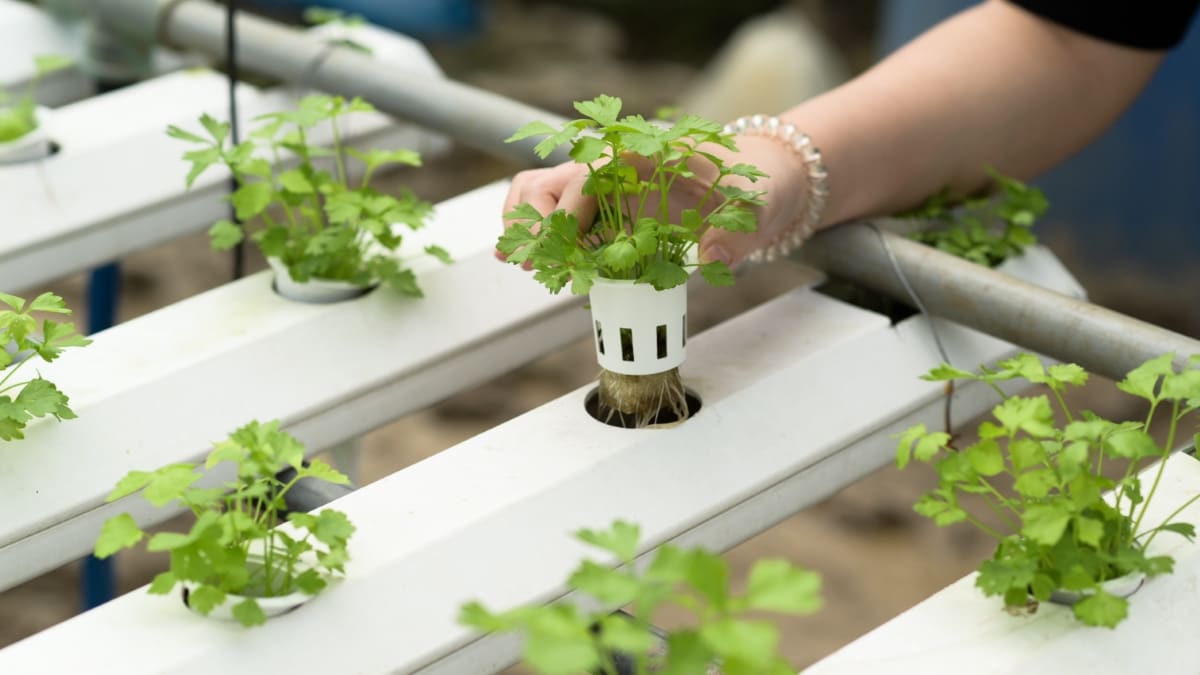Hydroponic systems offer controlled environments for plant growth, but they are not immune to pests. Hydroponic pest control methods involve employing various techniques to prevent infestations and minimize damage. Strategies include monitoring, sanitation, biological controls, and, when necessary, the use of pesticides tailored for hydroponic setups.
Importance of Natural Pesticides for Maintaining Crop Health
Natural pesticides play a crucial role in hydroponic agriculture by effectively combating pests while minimizing adverse effects on plants and the environment. These homemade hydroponic pest remedies offer sustainable pest management solutions, preserving crop health and productivity without harmful residues or ecological imbalances. By harnessing the power of natural compounds, hydroponic growers can maintain thriving crops while adhering to environmentally conscious practices.

Homemade Natural Pesticides for Hydroponics
Identifying Common Hydroponic Pests
Overview of Pests Commonly Found in Hydroponic Environments
Hydroponic systems create optimal conditions for plant growth, but they can also attract a variety of pests. Common intruders include aphids, spider mites, whiteflies, thrips, and fungus gnats. These pests thrive in the warm, humid environments typical of hydroponic setups and can quickly reproduce, posing significant threats to crop health and yield if left uncontrolled.
Symptoms of Pest Infestations in Hydroponic Crops
Signs of pest infestations in hydroponic crops include yellowing or curling leaves, stunted growth, visible pests on plants or in growing media, wilting, and leaf discoloration. Additionally, plant damage, such as holes in leaves or webs, may be evident. Vigilant monitoring and prompt action are essential to prevent pests from causing irreparable harm to hydroponic crops.
Advantages of Homemade Natural Pesticides
Benefits of Using Homemade Remedies Over Synthetic Pesticides
Firstly, these natural pesticides for hydroponic crops are cost-effective, as they often utilize readily available ingredients. Additionally, homemade remedies are customizable, allowing growers to tailor formulations to specific pests and crops. They also promote sustainability by reducing reliance on chemical inputs and minimizing environmental pollution. Furthermore, homemade natural pesticides are generally safer for both human health and beneficial organisms, presenting a viable alternative for DIY hydroponic pest management.
Reduced Environmental Impact and Health Concerns
Unlike synthetic pesticides, which can persist in soil and water, homemade remedies often break down quickly, reducing the risk of long-term environmental damage. Moreover, they pose fewer health concerns for growers, consumers, and farmworkers, as they are typically non-toxic or have lower toxicity levels compared to synthetic alternatives.
Basic Components of Homemade Natural Pesticides
Natural Ingredients with Pesticidal Properties
Homemade hydroponic insecticides utilize a variety of ingredients known for their pesticidal properties. Common examples include neem oil, garlic, hot peppers, soap, vinegar, and baking soda. These ingredients contain compounds that repel or disrupt the life cycles of pests, effectively controlling their populations while minimizing harm to beneficial organisms and the environment.
Plant-Based Extracts, Essential Oils, and Household Items for Pest Control
Plant-based extracts like pyrethrum, essential oils such as peppermint or eucalyptus, and household items like dish soap or cooking oil are some of the homemade hydroponic pest deterrents that can be combined to create effective homemade natural pesticides. These ingredients are readily available, affordable, and safe for use in hydroponic systems, offering growers accessible solutions for organic pest control for hydroponics without resorting to synthetic chemicals.
Recipe Selection and Formulation
Choosing Appropriate Ingredients Based on Target Pests
Selecting the right ingredients for homemade hydroponic pest prevention involves considering the specific pests affecting your hydroponic crops. For example, neem oil is effective against aphids and mites, while garlic and hot pepper solutions deter chewing insects like caterpillars and beetles. Understanding the pests’ vulnerabilities and preferences helps tailor the pesticide recipe to maximize effectiveness and minimize damage to beneficial organisms and plants.
Mixing Ratios and Preparation Techniques for Homemade Pesticide Blends
Mixing ratios and preparation techniques vary depending on the selected ingredients and their intended use. Generally, recipes involve diluting concentrated solutions like neem oil or essential oils with water and sometimes adding a surfactant like soap to enhance adherence to plant surfaces. Careful measurement and thorough mixing ensure even distribution and efficacy. Experimentation may be necessary to find the optimal blends in natural pest management in hydroponics.
In case you missed it: How to Make Turmeric Powder Pesticide Solution: Benefits and Application for Garden Plants

Preparation and Application Methods
Methods for Preparing Homemade Pesticide Solutions or Sprays
These eco-friendly pest solutions for hydroponics are typically prepared by diluting concentrated ingredients with water in appropriate ratios. For example, neem oil is often mixed at a rate of 1-2 tablespoons per gallon of water, while essential oils may require only a few drops per gallon. After mixing, the solution is usually strained to remove any large particles or solids before application.
Safe Application Techniques to Avoid Damage to Hydroponic Systems or Crops
Ensure thorough coverage of plant surfaces while avoiding oversaturation, as excess moisture can promote disease or root rot in hydroponic environments. Apply pesticides during cooler periods, preferably in the early morning or late evening, to reduce the risk of leaf burn from intense sunlight. Regularly inspect plants for stress signs or adverse reactions to the pesticide, adjusting application frequency or concentration as needed.
Integrated Pest Management (IPM) Strategies
Incorporating Natural Pesticides Into a Holistic Pest Management Approach
Integrated Pest Management (IPM) emphasizes a multi-faceted approach to pest control, integrating various strategies for sustainable management. Natural pesticides serve as a vital component within this framework, offering effective pest suppression while minimizing environmental impact.
By incorporating homemade hydroponic pest repellents alongside cultural practices, biological controls, and physical interventions, growers can create a comprehensive pest management system that promotes crop health and resilience. This holistic approach reduces reliance on synthetic chemicals and fosters a balanced ecosystem within hydroponic environments.
Combining Cultural, Physical, and Biological Control Methods with Homemade Pesticides
Cultural practices like crop rotation and sanitation reduce pest habitats, while physical interventions like row covers or traps physically deter pests. Biological controls, including beneficial insects or microbial agents, target pest populations naturally. When integrated with homemade pesticides, these methods create a robust defense against pests in hydroponic systems, promoting sustainable pest control for hydroponic systems by minimizing environmental impact and reducing reliance on chemical inputs.
Monitoring and Prevention
Regular Inspection of Hydroponic Systems for Signs of Pest Activity
Regular and thorough inspection of hydroponic systems is essential to detect signs of pest activity early. Look for visible pests, such as aphids or spider mites, as well as symptoms like leaf discoloration or wilting. Monitor both plants and growing media for any indications of pest presence. Prompt identification allows for swift intervention, preventing pest populations from escalating and causing significant damage to crops.
Implementing Preventive Measures to Minimize Pest Infestations
Implement practices such as maintaining proper sanitation, removing debris, and regularly cleaning equipment to reduce pest habitats. Additionally, use physical barriers like insect screens or row covers to prevent pest access to crops. Employing resistant plant varieties and optimizing environmental conditions further strengthens plant health and resilience against pests. By proactively addressing potential risk factors, growers can achieve hydroponic pest control without chemicals.
In case you missed it: How to Make Agniastra Organic Pesticide and Use for Garden Plants

Safety Considerations
Safety Precautions when Handling and Applying Homemade Pesticides
When handling and applying DIY hydroponic pest sprays, it’s crucial to prioritize safety. Wear appropriate protective equipment such as goggles, hand gloves, and a mask to face to avoid skin contact, irritation, and inhalation of fumes. Always mix and apply pesticides in well-ventilated areas to minimize exposure to vapors. After use, thoroughly wash hands and any equipment used to avoid accidental ingestion or contamination of other surfaces.
Potential Risks and Proper Storage of Homemade Pesticide Ingredients
Store concentrated solutions, essential oils, and other ingredients in tightly sealed containers, away from children, pets, and food items. Keep them in a cool, dry place, out of sunlight, to maintain stability and potency. Label containers clearly with contents and preparation instructions to prevent accidental misuse. Regularly inspect stored ingredients for signs of degradation or leakage, and dispose of expired or unusable products responsibly.
In case you missed it: How to Use Green Chilli Garlic Mix as Organic Pesticide for Your Garden Plants

Conclusion
Homemade natural pesticides offer hydroponic growers an accessible and sustainable solution for pest management. Integrating these homemade remedies into holistic pest management strategies ensures healthier crops, fosters ecological balance, and promotes the long-term sustainability of hydroponic agriculture.
- Feed Your Flock for Less: Top 10 Tips to Save on Chicken Feed
- Ultimate Guide to Ossabaw Island Hog: Breeding, Raising, Diet, and Care
- Hatching Answers: The Top 10 Reasons Your Chickens Aren’t Laying Eggs
- Eggs and Economics: Breaking Down the Cost of Raising Backyard Chickens
- Defend Your Greens: Proven Methods to Keep Iguanas Out of Your Garden
- Ultimate Guide to Cinnamon Queen Chicken: A Comprehensive Guide for Beginners
- Ultimate Guide to California Tan Chicken: Breeding, Raising, Diet, Egg-Production and Care
- Ultimate Guide to Marsh Daisy Chicken: Breeding, Raising, Diet, and Care
- 10 Types of Chicken Farming Businesses You Can Start for Profits